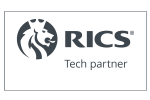An alarm was raised when Health Minister Maria Caulfield admitted last year that 34 hospital buildings in England were at risk. This admission caused one affected hospital boss to call the situation a “ticking time bomb” amid widespread concern for the state of public sector properties.
However, the true scale of the issue has emerged more recently, with reports of weak concrete in buildings spanning the length and breadth of the public sector.
As a Crown Commercial Service (CCS) provider, Property Inspect realises the need for positive change to keep state-owned/government buildings in the best possible condition. In this article, we’ll highlight the need for remedial work across the public sector and the positive impacts of our software on efficiency and safety.
Concerns raised over the state of public sector buildings
Caulfield’s announcement was in reference to the identification of reinforced autoclaved aerated concrete (RAAC) in the roofs of 34 hospital buildings. Seen as an affordable solution for post-war buildings, this aerated lightweight cement is free of coarse aggregate and so has different structural properties to reinforced concrete.
However, while initially considered safe, many of the RAAC panels have long passed their 30-year shelf life and are now showing signs of wear and tear. This is particularly true where such RAAC roofing hasn’t been properly maintained.
Caroline Shaw, Chief Executive of the King’s Lynn Queen Elizabeth Hospital, compared the building’s RAAC roof to a “chocolate aero bar”, with daily checks having to be made to ensure that it doesn’t collapse.
Loughborough University Professor and construction expert Chris Goodier said: “It is RAAC from the 1950s, 60s and 70s that is of main concern. RAAC examples have been found with bearings (supports) which aren’t big enough, and RAAC with the steel reinforcement in the wrong place, both of which can have structural implications. Prolonged water ingress (not uncommon on old flat roofs) can also lead to deterioration.”
This same issue has been identified across 16 hospital trusts, including those of Airedale in Yorkshire, Frimley Park in Surrey, Hinchingbrooke in Cambridgeshire and West Suffolk Hospital in Bury St Edmunds. The Local Government Association confirmed it’s seriousness in 2020, following the report of two roof failures which occurred with little or no warning.
As such, a reported fund of £110m has been allocated to mitigate any immediate risk, with a further £575m to be pledged in the current spending review period.
A challenge of unknown scale
As we previously mentioned, there have been concerning reports of RAAC roofing across the wider public sector, with hundreds of school and military buildings being assessed. Concerns have been raised about the presence of RAAC in prisons and courts too.
Private landlords may also face the prospect of costly remediation works, following the purchase of public estate properties over recent years. There have been widespread calls to mitigate the issue, ensuring the improvement of private and public sector building safety through essential remediation.
Shifting focus to the educational sector, it has also been estimated that more than a third of England’s school buildings are structurally unsafe. This has prompted the head of the public spending watchdog to raise the projected risk of building collapse or failure causing death or injury to “critical and very likely”.
There’s a clear need to increase the scrutiny of school property inspections and surveys, ensuring that defects are identified and essential remedial works are carried out in line with health and safety regulation.
This point also applies to other sectors, too. Defence Procurement Minister James Cartlidge said that risk assessments should be carried out and mitigations put in place even where RAAC is suspected and not confirmed.
The importance of CCS support
Given the significant levels of government investment, it’s quite likely that public sector property managers will look to the support of approved Crown Commercial service solution providers such as Property Inspect.
With government support, and through the appropriate procurement channels, they are empowered with access to technology that fundamentally streamlines property inspections, reporting, and operations. In practice, this increases the chance of mitigating issues, such as the presence of RAAC. Through the CCS, financially limited public sector organisations can benefit from cost savings, shorter procurement timescales and simplified procurement processes, to ensure that it is accessible to all.
Steve Rad, Founder and CEO of Property Inspect said that the recently obtained CCS status enables Property Inspect to “establish connections with public sector organisations who are in desperate need of smarter and safer solutions to enhance their operations for the benefit of society, while at the same time improving their processes, increasing efficiency and saving money.”
Developed in compliance with the Building Safety Act of 2022, Property Inspect also allows for the secure digital storage of building data. This makes for greater awareness of the building methods that have been used and maintenance work that has been carried out.
Able to reference a golden thread of data, property managers, building owners, investors and commercial landlords will be able to get a 360-degree view of their properties, so they will be much better prepared to ensure legal compliance and public sector safety across the board, with any issues causing structural instability identified and stored in a historical timeline of all inspections.
This emphasis on property information is of the utmost importance, due to the requirements set out in legislation. As specified by the Building Safety Act 2022, property information must be:
- Available to people who need the information to do a job
- Available when the person needs the information
- Kept digitally and securely
- A building’s single source of truth
- Presented in a way that a person can use
Property professionals using the award-winning Property Inspect app will be able carry out property inspections in the digital format, rather than with pen and paper – as was the case when much of the RAAC roofing was installed.
The collected data can then be used in the preparation of condition reports, electrical or gas safety certificates, surveys, and risk assessments for real-time analysis. This will mean that building safety issues can be identified at the earliest opportunity, highlighting the need for corrective action to minimise the level of risk.
Offering an array of benefits, inspection technology should be the first choice for public sector CCS procurement. With its reliable infrastructure and secure cloud-based storage, Property Inspect allows for the demonstration of compliance with GDPR and other complex data regulations, ensuring minimal risk to public data.
In addition, Property Inspect enables the issuing of notifications via the live dashboard for real-time property issue awareness, giving users the abilit to capture high-quality property images and videos for reference.
There are many upsides to embedding technology to address the significant challenges in the built environment, and through the Crown Commercial Services public sector procurement scheme, Property Inspect is well placed to help property professionals stay compliant, efficient and safe.
Book a demo or free trial to experience the many benefits of Property Inspect first-hand.










